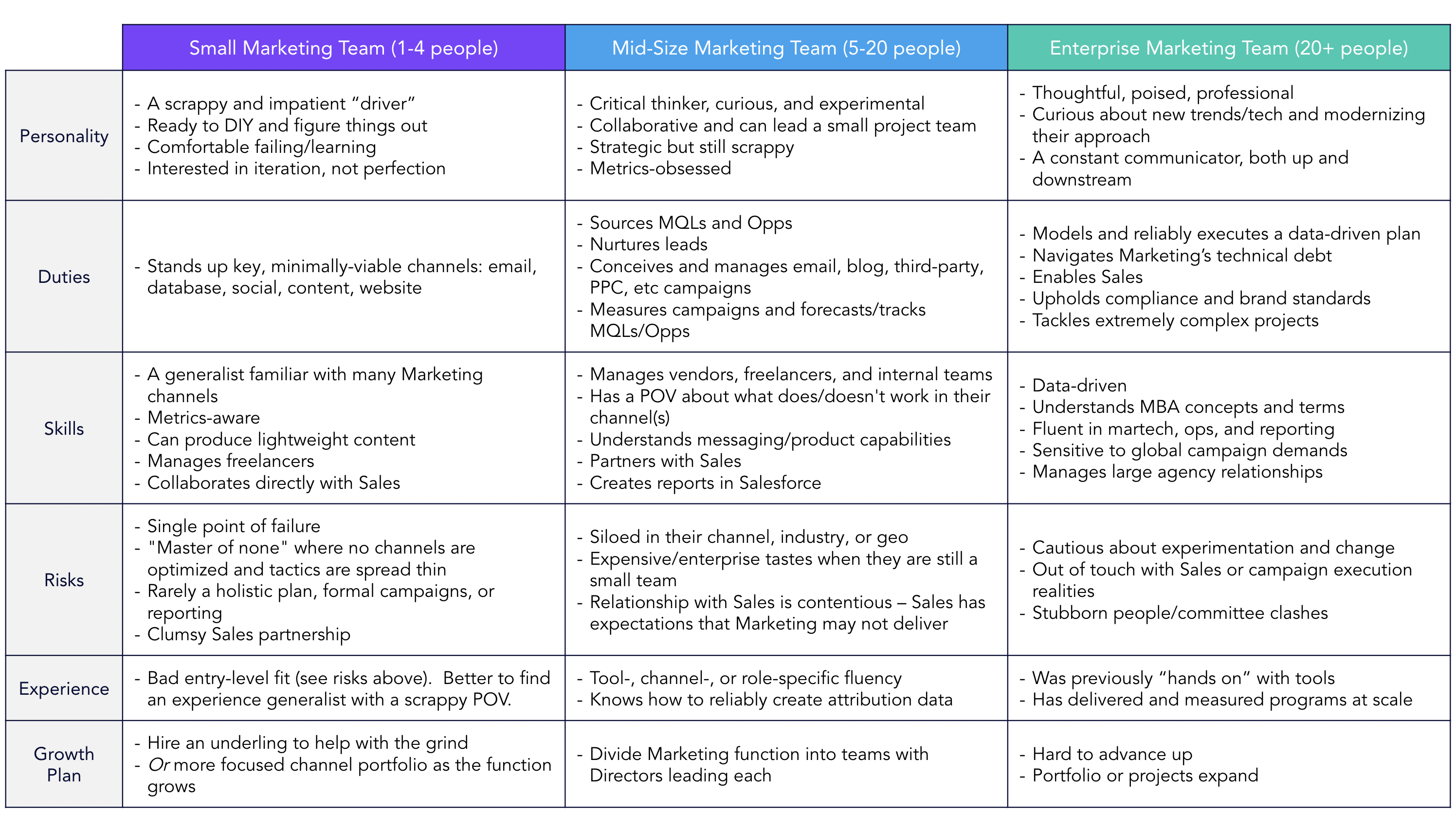What’s the real driver of increased marketing budgets over recent years? It isn’t brochures. It’s the rise of MarTech and the need for specialized talent to manage it. Marketing’s shift from brand to revenue in inevitable.
According to the Gartner 2016-2017 CMO Spend Survey, 75% of marketing leaders say they now own or share responsibility for P&L. And sales leadership? According to a 2016 HubSpot survey, 57% of sales reps believe buyers are less dependent on salespeople during the buying process.
Marketing is now the keeper of critical data and insights that propel growth. If revenue discussions were once reserved for the CEO, COO and sales leadership alone, those days are over: marketing has earned a strategic seat at the revenue table.
>> Related: Three Things Revenue Marketers Do Differently <<
Yet even with the MarTech explosion and availability of data, the average B2B marketer still spends hours every week aggregating data, wrestling with Excel, and struggling to unpack some pretty important insights, like:
- Length of time leads spent in various funnel stages
- Campaign performance in aggregate, comparing campaigns to others
- Comparing plan vs. actuals—what assumptions were accurate and which were off
- How to forecast the impact on revenue based on historical performance and how to adjust accordingly
Most organizations have a way to track leads and ops or engagement within accounts. It’s not the lack of data—it’s the ability to do meaningful things with it.
In spite of sophisticated technologies and increased responsibilities, many teams still struggle with the ability to connect data to revenue or forecast marketing’s impact on the bottom line.
According to The CMO Survey, sponsored by Duke University, Deloitte, and the American Marketing Association, marketers say barely a third of available data are used to drive decision making in their companies. The second largest barrier that prevents them from using analytics is the lack of people who can span the world of marketing analytics and marketing practice.
Of course, we need analysts and business ops talent, but the real need is for the marketing team—in its entirety—to be focused on contribution to revenue.
How do you get there? Here’s a simple breakdown:
- Marketing and sales alignment to define a shared understanding of revenue goals
- A marketing plan that makes sense and tracks back from revenue goals
- An efficient way to track marketing’s performance throughout the quarter
- The agility to adjust if you’re not meeting your goals
- Understanding key metrics to track and what to report to different audiences
- Team ownership: providing every member of your team with a way to measure their activities’ impact on engagement and revenue
Sharing ownership of a portion of the P&L means aligning with sales and setting realistic goals based on revenue targets, average deal size, and average conversion rates. Once you’ve reached agreement on revenue goals, create a marketing plan that works back from those goals—setting lead and opp targets the team can realistically achieve given your budget and resources.
In the real world, it’s pretty easy to gloss over goal setting and funnel modeling, but lead & opp (or ABM) targets that tie back to a revenue goal is key to creating a marketing team that consistently contributes to pipeline and drives growth.
Otherwise, aren’t we just committing random acts of marketing?
Image via Giphy
Need guidance on creating a revenue-focused marketing plan? See The Modern Marketer’s Guide to Annual Planning >




